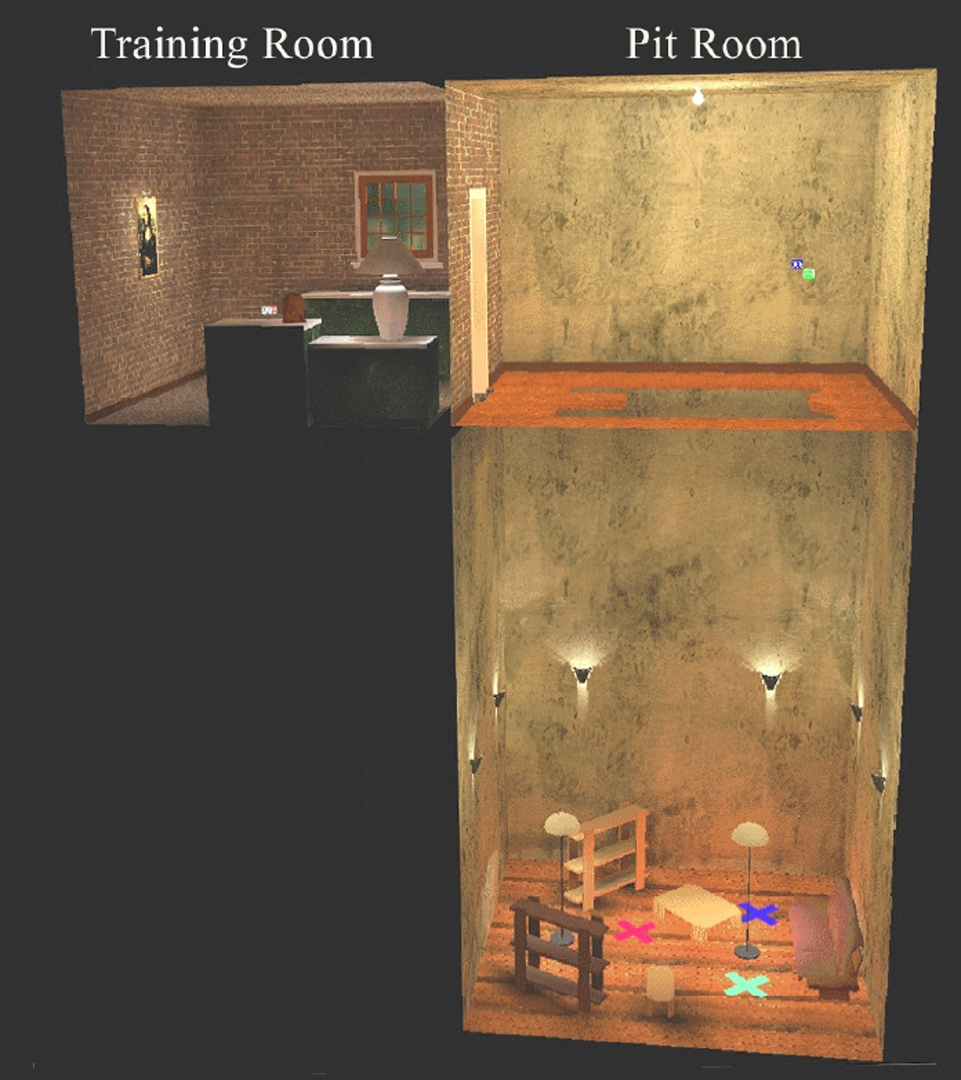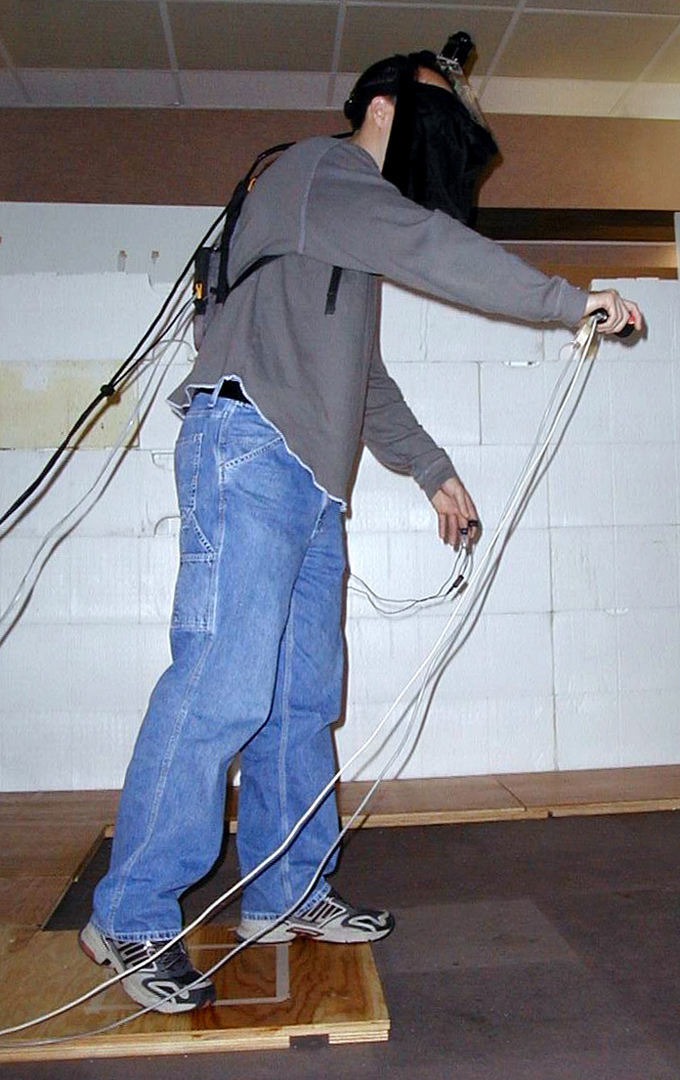“Physiological Reaction and Presence in Stressful Virtual Environments” by Meehan, Whitton, Razzaque, Zimmons, Insko, et al. …
Conference:
Experience Type(s):
E-Tech Type(s):
Entry Number: 75
Title:
- Physiological Reaction and Presence in Stressful Virtual Environments
Organizer(s)/Presenter(s):
Description:
A common metric of VE quality is presence ? the degree to which the user feels like they are in the virtual scene as opposed to the real world. Presence is important for many VE applications [Hodges et al. 1994]. Since presence is a subjective condition, it is most commonly measured by self-reporting, either during the VE experience or immediately afterwards by questionnaires. There is vigorous debate in the literature as to how to best measure presence [Meehan 2001].
In order to study a VE?s effectiveness in evoking presence, researchers need a well-designed and verified measure of the phenomena. This exhibit demonstrates the compelling VE and physiological monitoring used to evaluate three physiological measures ? heart rate, skin conductance, and skin temperature ? as alternate measures of presence in stressful VEs. We found that among these physiological reactions, heart rate is the best measure of presence [Meehan.et al. 2002].
Figure 1 shows the environment: a Training Room, quite ordinary, and an adjacent Pit Room, with an unguarded hole in the floor leading to a room 20 ft. below. On the upper level the Pit Room is bordered with a 2-foot wide walkway. The 18×32 foot, 2-room virtual space fits on a one-to-one scale within the SIGGRAPH Emerging Technologies exhibit and is underneath the 3rd Tech wide-area ceiling tracker. Users, wearing a head-tracked stereoscopic head-mounted display and physiological monitoring equipment (Figure 2), practice walking about and picking up and placing objects in the Training Room. Once the door between the two rooms opens, they walk to an unexpected hazard, the 20-foot deep pit. Then they are asked to carry a ball into the pit room and drop it on a target at the very bottom of the pit.
The reaction elicited by this VE could be due to vertigo, fear, or some other innate or learned responses. The reactions are well known in the literature and manifest as increased heart rate and skin conductance and decreased skin temperature. We hypothesize that the more presence users feel in the stressful virtual scene, the more physiological reaction they will exhibit. What causes this higher presence and higher physiological reaction? Is it due to a more realistic flow of visual information? Is it due to more coherence between the visual and haptic information? Is it due to the improved visual realism? We cannot answer these questions definitively. We have empirically shown, however, that physiological reaction and reported presence are both higher when we make improvements to the VE. For example, when we add a real wooden ledge that visitors can feel with their toes, we see a significant increase in heart rate. With the opportunity afforded to us by SIGGRAPH, attendees can find out for themselves: ?How real can a virtual environment be?? and ?How does this effect my physiological reactions??
Other Information:
References
M. Meehan (2001). Physiological reaction as an objective measure of
presence in virtual environments. Doctoral Dissertation. Computer
Science. University of North Carolina, Chapel Hill, NC, USA.
M. Meehan, B. Insko, M. Whitton, F. P. Brooks (2002). Physiological
Measures of Presence in Stressful Virtual Environments. In Proc. of
ACM SIGGRAPH 2002. ACM Press/ ACM SIGGRAPH.
Hodges, L., B. Rothbaum, R. Kooper, D. Opdyke, J. Willford, T. Meyer
and M. North (1994). Presence as the defining factor in a VR
application. Technical Report GVU-94-06. Georgia Tech University,
Graphics, Visualization, and Usability Center.






